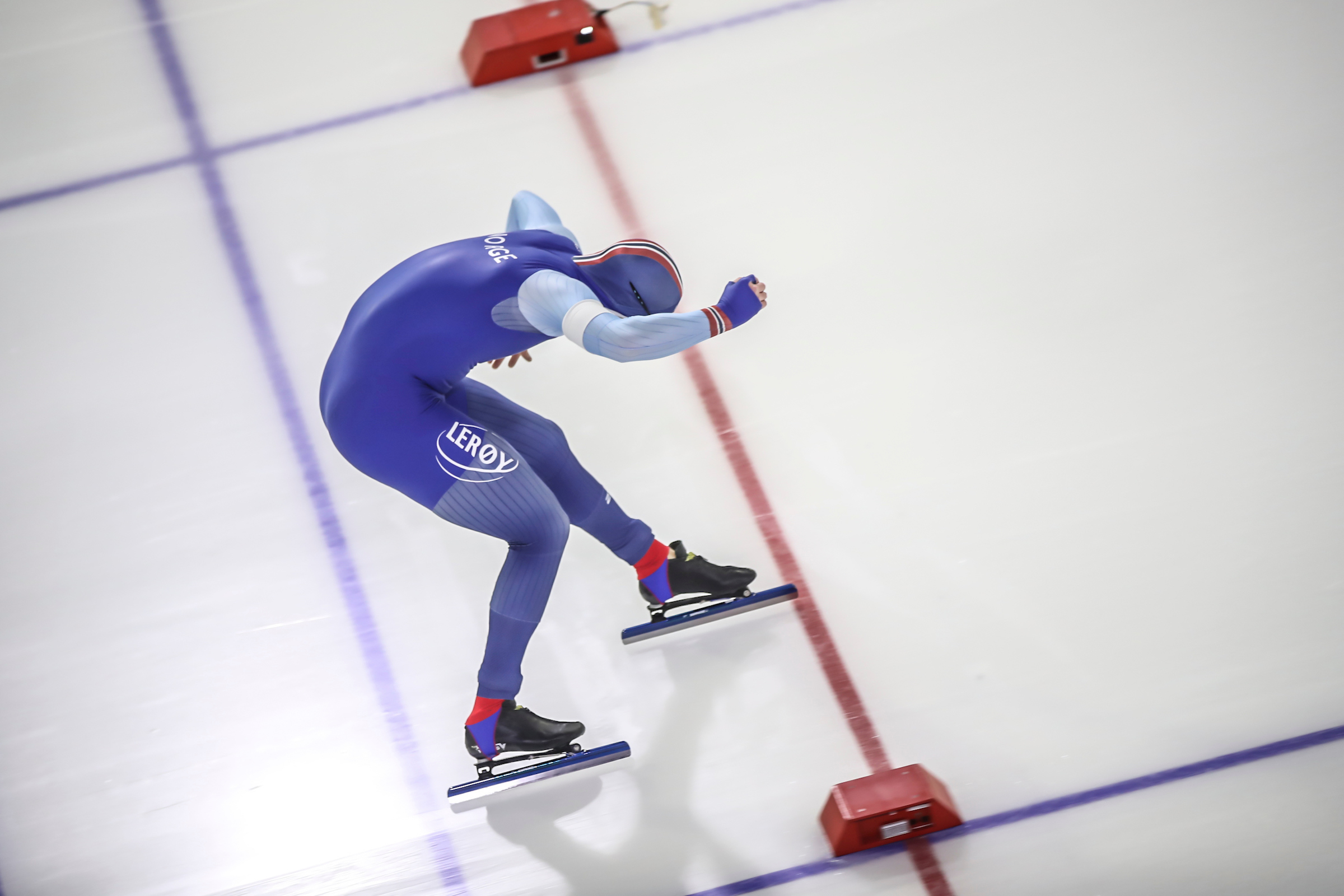How to time speed skating
How to time speed skating
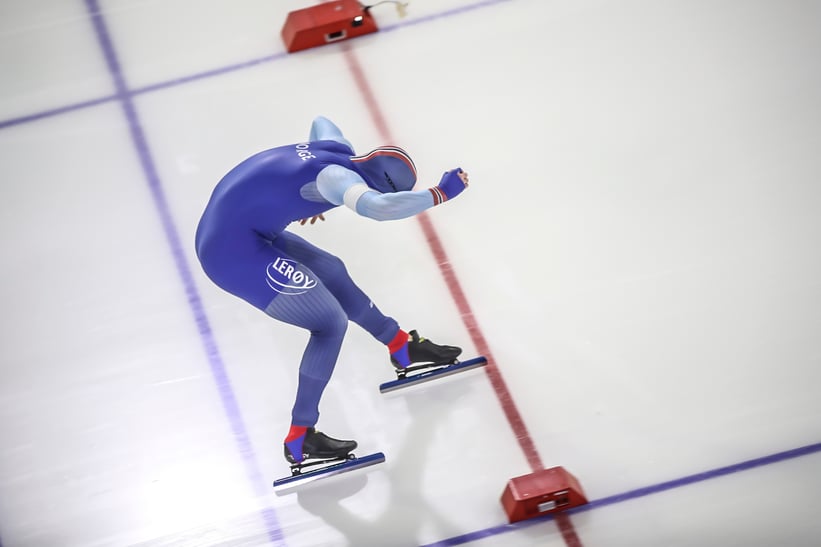
Speed skating. The fastest muscle driven sport on ice. The athlete's muscle strength is the only source of power for reaching high speeds, up to 60 kph. Skaters compete to each other by racing 1 to 1. The fastest skater of all pairs wins. When timing speed skating races, every millisecond counts. What does it take to time speed skating races? We spoke to Jeroen Fredriks, timer of the KNSB (Royal Netherlands Speed skating Federation) since 2000.
 Starting in the 90s with timing local young skaters, Jeroen has worked himself all the way up to timing National (NC), European (EC), World championships (WC) and the Olympic Games. Jeroen: ’I’ve seen so many Ice rinks from both the inside and outside, and have been timing nearly every category, from novices to the Olympics’. After a competition is finished, there is a lot of data that tells the story of the skater and competition. ’In the Netherlands, there are around 1200 competitions each season. The KNSB retrieves the data from those events and makes rankings. Based on those rankings, selections for teams can be made. Both for the pro teams and the younger generations, to stimulate talent and for the recreational skater to see their results and progress. By doing this, with all these license holders, we can manage to deliver future champions in speedskating, from the Netherlands.'
Starting in the 90s with timing local young skaters, Jeroen has worked himself all the way up to timing National (NC), European (EC), World championships (WC) and the Olympic Games. Jeroen: ’I’ve seen so many Ice rinks from both the inside and outside, and have been timing nearly every category, from novices to the Olympics’. After a competition is finished, there is a lot of data that tells the story of the skater and competition. ’In the Netherlands, there are around 1200 competitions each season. The KNSB retrieves the data from those events and makes rankings. Based on those rankings, selections for teams can be made. Both for the pro teams and the younger generations, to stimulate talent and for the recreational skater to see their results and progress. By doing this, with all these license holders, we can manage to deliver future champions in speedskating, from the Netherlands.'
Timing speed skating
Before such a ranking is created, the skaters try their hardest to improve themselves. To generate the skaters’ data, the timer plays a vital role.
‘2 to 3 days before the event, the systems should be ready for operation. Most systems are permanently in ice stadium Thialf, but some are temporary installed for the event. The draw for the races takes place at the evening before the competition. After the draw transponders will be linked to the competitor’s starting time. About 2,5 hours before the first start, we get ready by checking if everything operates well. Up to 30 minutes before the race last-minute withdrawals result in a new draw, after that, the skater that remains in the race must skate alone, without competitor. After the resurface of the ice we install the laser detection on ice and then we’re ready to go!’.
That seems like an oiled machine, but like with all sports, timing speed skating races can come with challenges or difficulties.
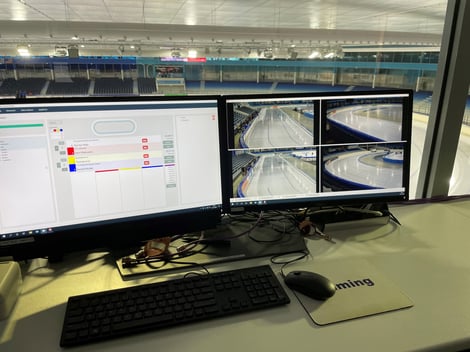
‘The biggest challenge is keeping issues away from the public. Even when everything goes wrong, they shouldn’t be aware of that, as we try to keep it all backstage. However, we’re still dealing with tech, machinery, so it’s inevitable that the systems sometimes fail. I think that once you realize that there were no delays in the competition, you did well’.
Does that mean Jeroen has never experienced any problematic moments?
’Of course, we did face problems sometimes. For example, that photo finish camera A didn’t work so we had to switch to B, and fix the issue in the background. Or the laser detection on ice, where if a skater kicks it, it stops working. And sometimes a transponder loop doesn’t work, so we then we cannot use it, or we have to switch to a bypass. You have to be careful what you communicate about issues. During the Olympics in Sochi (2014) I was very open about everything, as I got approached by press for some background info. Sometimes something you say get interpreted wrongly, and before you know it you see yourself in the newspaper talking about something you didn’t say. I then realized, well, at the Olympics, I just don’t talk about it.’
Timing on ice rink Thialf
The beating heart of the Dutch skating sport is in Thialf, and there’s a good reason for that. Jeroen; ’Thialf is special because it’s a complete Ice stadium, not just a rink. Many national and professional teams train here… that also results in more extensive facilities than anywhere else in the Netherlands. In the Netherlands we have 15-17 Ice Rinks, but most of them have limited budget, so they only have a basic timing setup. In addition, at Thialf you’ll see more support on different areas, from the use of video to the 12 transponder loops we have here (1 is required for basic timing). Everything here is just set-up more extensively, resulting in more support from the teams and vice-versa.’
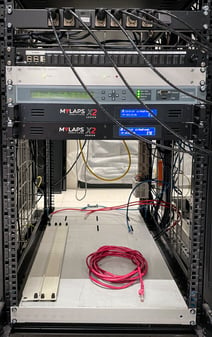
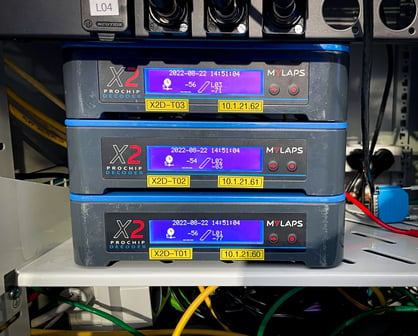
Around 2005-2006 the first MYLAPS systems came into picture at Thialf. Back then, the team pursuit was added to the longtrack calendar, and it became an Olympic event. With team pursuit, two teams race against each other in teams of 3. The time of the third skater crossing the line is used for the competition. 'Because the laser detection we used for timing couldn’t detect a third skater, we had to integrate a new way of timing. The marathon competition was already testing transponder timing. Transponders could both detect many skaters at once, and it saved the photo finish operator a lot of time. We then decided to put transponder timing in the mix for Long Track and team pursuit too.'
Timing innovations in speed skating
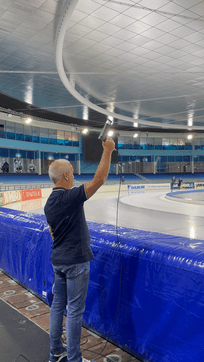 Being a timer for so long, Jeroen has seen the innovation of the speedskating sport and timing from closeby. Besides technical innovations, he also cherishes some moments he got to experience as a timer. ’There are Icerinks that are super special. Salt Lake City for instance, where most world records are set. You sometimes experience races, where you think well, he’s never gonna be able to skate that fast.'
Being a timer for so long, Jeroen has seen the innovation of the speedskating sport and timing from closeby. Besides technical innovations, he also cherishes some moments he got to experience as a timer. ’There are Icerinks that are super special. Salt Lake City for instance, where most world records are set. You sometimes experience races, where you think well, he’s never gonna be able to skate that fast.'
In speedskating you have these ‘magic’ time barriers for personal, national and world records. This could be the first time a kid skates the 500m just below one minute, below 50sec, etc. 'A couple years ago, the world record 500m was 34 seconds. This was a magic barrier, that record was there for a very long time. Then, in Salt Lake City, I saw a skater (Pavel Koelzjnikov) going very fast, and couldn’t believe it. Was he really gonna break it? When he finished, and the scoreboard said 33.98, I started screaming YES! And of course, the Olympics are special, because everything must be perfect, working, and just the entire vibe cannot be compared to any other event.'
The future of speed skating
And how about the future? Jeroen is very excited when we ask him about the coming years. 'About 10,15 years ago we thought that in a few years, everything is refined and we just keep doing what we’re doing. But that was completely wrong. Everything is still developing. First the link with timing and the systems to the internet, then visualizing real-time data and now for example the cameras around the track. How can we use and integrate those? Or how can we automate processes? What can we do with tracking to make racing even more interesting? These things are still stand-alone, but who knows what we can do together to imply this in the future? For now, I’m happy how we keep track of these fast developments together with MYLAPS. For me, it’s super important to have a partner that we can consult, reach and discuss to realize new innovations for speed skating in terms of decoders, automation and many more.'
Want to learn more about timing systems for speed skating? Visit the speed skating section on our website or contact our Sales Team.

